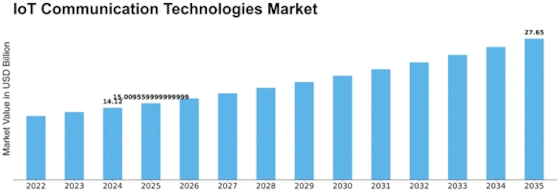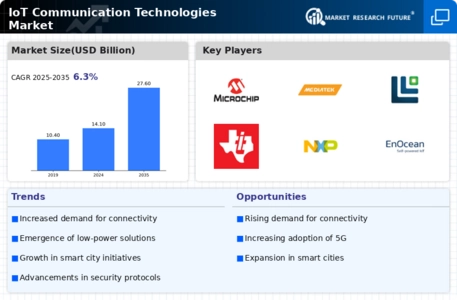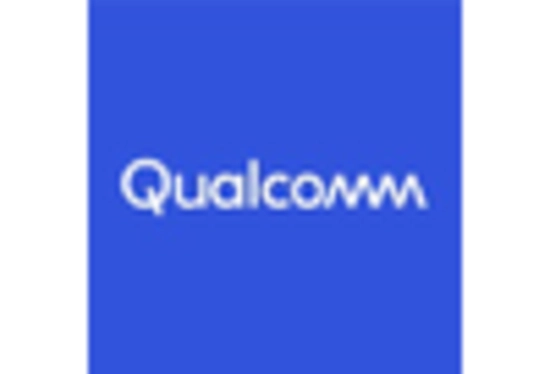Iot Communication Technologies Size
IoT Communication Technologies Market Growth Projections and Opportunities
The Internet of Things (IoT) communication technologies market is shaped by various market factors that play a pivotal role in its growth and evolution. One of the primary drivers is the increasing demand for connected devices across various industries. As businesses strive to enhance efficiency and gather real-time data for informed decision-making, the need for robust IoT communication technologies has surged. This demand is particularly evident in sectors like manufacturing, healthcare, and smart cities, where interconnected devices form the backbone of operational processes.
Moreover, the ongoing advancements in communication protocols contribute significantly to the market dynamics. The adoption of low-power, wide-area networks (LPWANs) and 5G technologies has expanded the possibilities for seamless connectivity and data transmission in the IoT landscape. These developments not only enhance the efficiency of existing IoT applications but also pave the way for innovative use cases and applications that were previously unattainable.
Security concerns remain a critical factor influencing the IoT communication technologies market. As the number of connected devices grows, so does the potential for security vulnerabilities. The market is responding with increased emphasis on developing and implementing robust security measures, including encryption protocols and secure authentication mechanisms. The ability to address these concerns effectively is crucial for gaining trust and promoting widespread adoption of IoT communication technologies.
The role of regulatory frameworks cannot be overlooked when analyzing market factors. Governments and regulatory bodies worldwide are actively shaping the IoT landscape by introducing standards and regulations that govern the use of connected devices and the data they generate. Compliance with these standards is not only a legal requirement but also a key factor in establishing credibility and reliability in the market.
Cost considerations also influence the adoption of IoT communication technologies. While the cost of sensors and connected devices has decreased over time, the overall implementation cost, including infrastructure and maintenance, remains a significant factor for businesses. As technology continues to evolve, and economies of scale come into play, the cost of IoT solutions is expected to further decrease, driving wider adoption across diverse industries.
Interoperability is another market factor that plays a crucial role in shaping the trajectory of IoT communication technologies. As the number of devices from different manufacturers continues to grow, ensuring seamless communication and data exchange becomes imperative. Standards that promote interoperability are essential for fostering a thriving ecosystem where devices from various vendors can work together seamlessly.
The competitive landscape also contributes to market dynamics. The presence of major players in the IoT communication technologies market, each vying for a larger market share, drives innovation and the development of cutting-edge solutions. This competitive environment benefits end-users by providing them with a range of options and pushing the industry towards continuous improvement.

















Leave a Comment